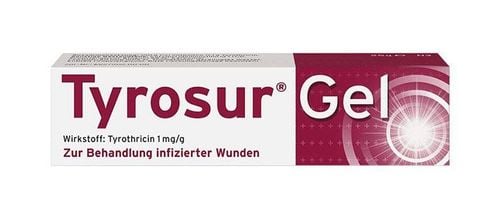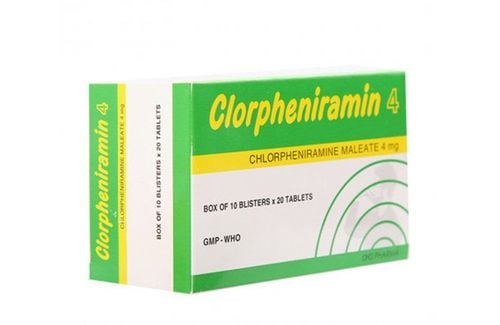This is an automatically translated article.
Phulora drug is made in the form of tablets, with the main ingredient being Loratadin. The drug is used in the treatment of some pathological symptoms of allergic rhinitis, allergic conjunctivitis,...
1. What is Phulora?
1 Phulora tablet contains 10mg of Loratadin and other excipients. Loratadine is a potent, long-acting tricyclic antihistamine with selective peripheral H1-receptor antagonist activity, with no CNS depressant effects. In addition, Loratadine also has anti-itching and histamine-related urticaria effects. Loratadine, however, is not protective or clinically helpful in cases of severe histamine release (eg, anaphylaxis).
Loratadine has no sedative effect (in contrast to the sedative side effects of first generation antihistamines).
Indications for use of Phulora: Symptomatic treatment of the following diseases:
Allergic rhinitis: Common symptoms include itchy nose, sneezing, runny nose; Allergic conjunctivitis : Common symptoms include itchy and burning eyes; Symptoms of urticaria and allergic skin disorders. Contraindications to using Phulora:
People with hypersensitivity or allergy to the drug's ingredients and active ingredients; Children under 6 years old.
2. Usage and dosage of Phulora
Usage: Orally. The patient should swallow the tablet whole with water, do not chew or crush the tablet.
Dosage:
People from 12 years of age and older: Take 1 tablet/time/day; Children from 6 to 12 years old: Weight from 30kg or more: Take 1 tablet/time/day; Weight under 30kg: Use dose 1⁄2 tablets/time/day; Patients with hepatic or renal impairment: Take 1⁄2 tablets/day or 1 tablet/time every 2 days. Missed dose, overdosage: Patients need to take the correct dose and full dose. In case of overdose or missed dose, the patient should consult a doctor, do not arbitrarily take medicine to make up for the dose.
3. Some notes when using Phulora
When using Phulora, users should pay attention to the following issues:
Side effects: The drug may cause some side effects such as headache, fatigue, nausea, rapid pulse, fainting, increased appetite and digestive disorders. When experiencing side effects of the drug, the patient should promptly notify the doctor for advice on the most appropriate treatment intervention; Caution: Caution should be exercised when using Phulora in patients with hepatic or renal impairment. It is best not to use the drug in pregnant and lactating mothers; Drug interactions: When used concurrently with Phulora, the drugs Cimetidine, erythromycin, fluconazole, ketoconazole, quinidine, fluoxetine may increase the concentration of loratadine in the blood. During the use of Phulora, patients should strictly follow all instructions and detailed instructions of the doctor to ensure high treatment effectiveness and limit adverse side effects.
Follow Vinmec International General Hospital website to get more health, nutrition and beauty information to protect the health of yourself and your loved ones in your family.













